Recursion: Behind the Scenes
Welcome to Recursion!
Hi! Welcome to this introduction to recursion, it’s great to have you here. 😀 This is a very powerful concept in programming… a function that calls itself! I know what you must be thinking: What?! The function calls itself? Why would you want to do that? 😅
Recursion is used when the result of a problem depends on the result of smaller versions of the same problem. Sounds strange? Don't worry! You will learn what it means with this tutorial. 😀
Let’s dive into the details with an example, calculating factorial.
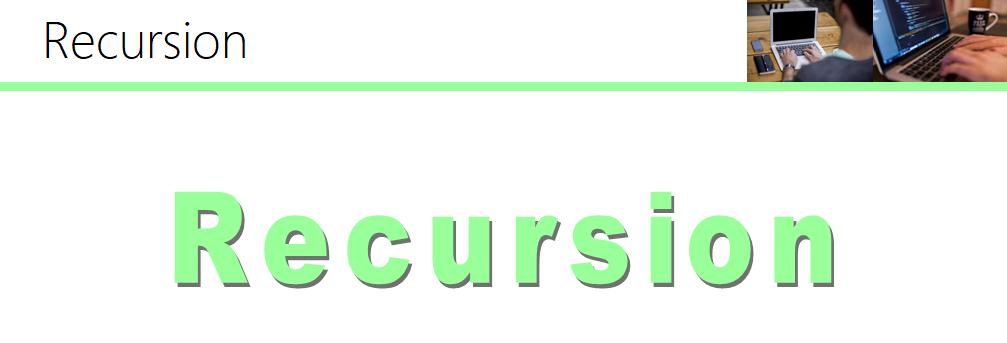
Meet Factorial 👋
The factorial of a positive integer n is the result multiplying all the integers less than or equal to n. For example, the factorial of 3 is 3 * 2 * 1 (by convention, the factorial of 0 is 1) Factorial is denoted as
n! in mathematics.
This is the code we will be working with. Please take a moment to analyze it.
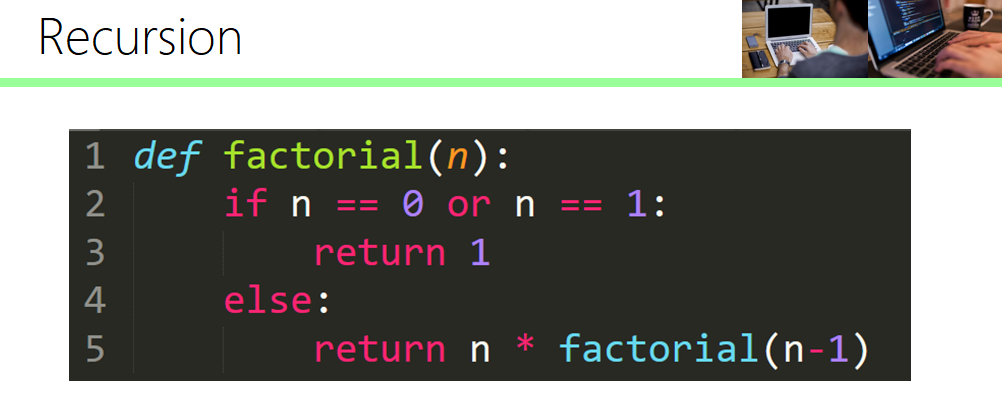
Base Case
I’m sure that you noticed that there is a call to factorial within the definition of the function itself. (please see the diagram below).
You might think, won’t this cause an infinite loop? 😫
Well, it won’t because we have what it’s called a base case, and we update the argument every time we call the function. The base case is when you specify a value that will be returned when a condition is met, and no more function calls will be made. In this example, when
n is 0 or 1, the value 1 will be returned, and no more function calls will be made.
💡 Note: It's very important to update the argument with each recursive function call. In this case,
factorial(n-1) is calling the same function but with the argument reduced by 1 each time. This way, we guarantee that the argument will eventually reach our base case, 1 or 0.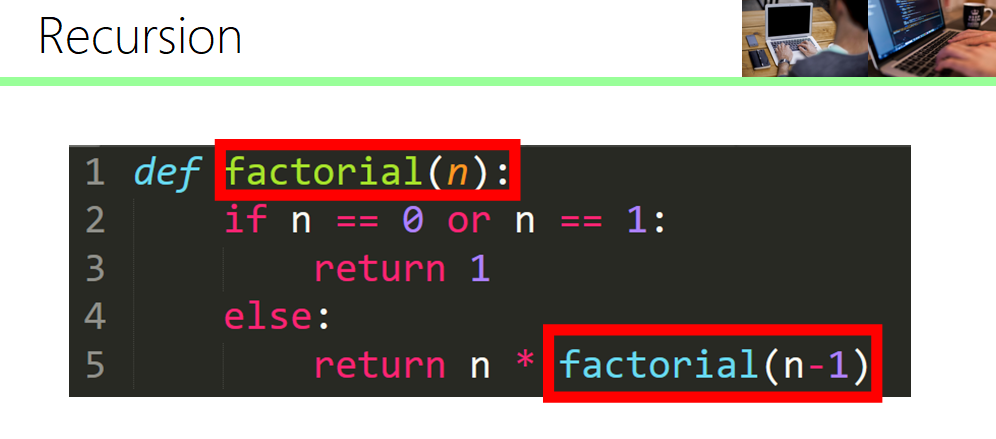
Behind the Scenes?
But what happens behind the scenes when the function calls itself? Let’s say that you call the factorial function with 3 as the argument (illustrated below).
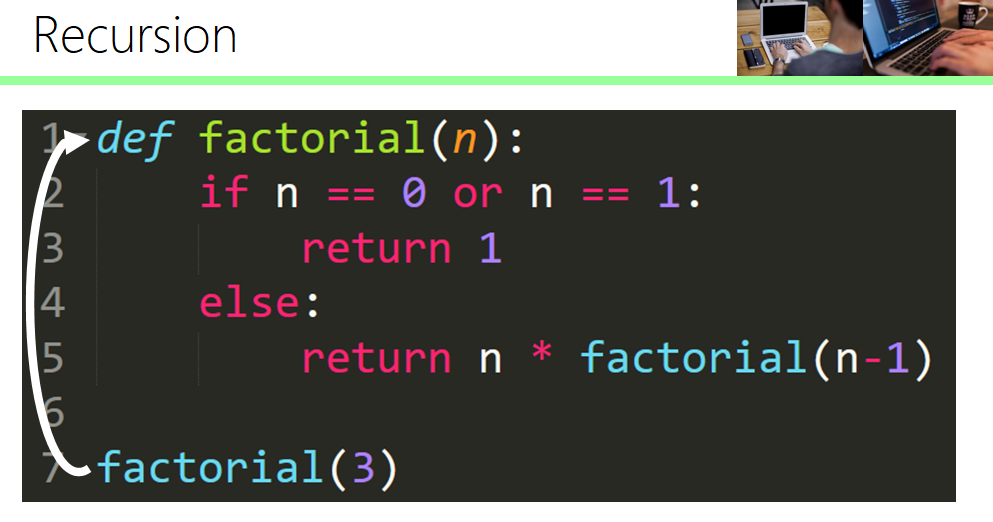
If statement
The if condition will be checked. If
n is either 0 or 1, the integer 1 will be returned. Since this is not the case, the else clause is executed.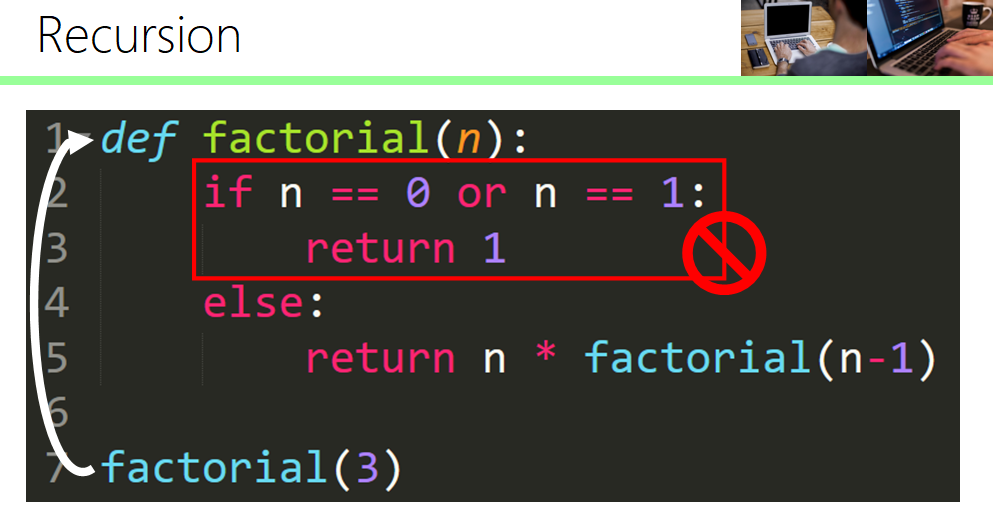
Else is Executed
In this else clause, you see a return statement in which the parameter
n is multiplied by the result of calling a function. But in this case, the function calls itself.
Let's see the process behind the scenes! 🎉
Let’s imagine what happens behind the scenes for a moment. Since n is the parameter, and 3 was passed as the argument, let’s replace the value to illustrate what happens. We now have a function call with a new argument, n – 1. (in this case, 3-1 = 2).
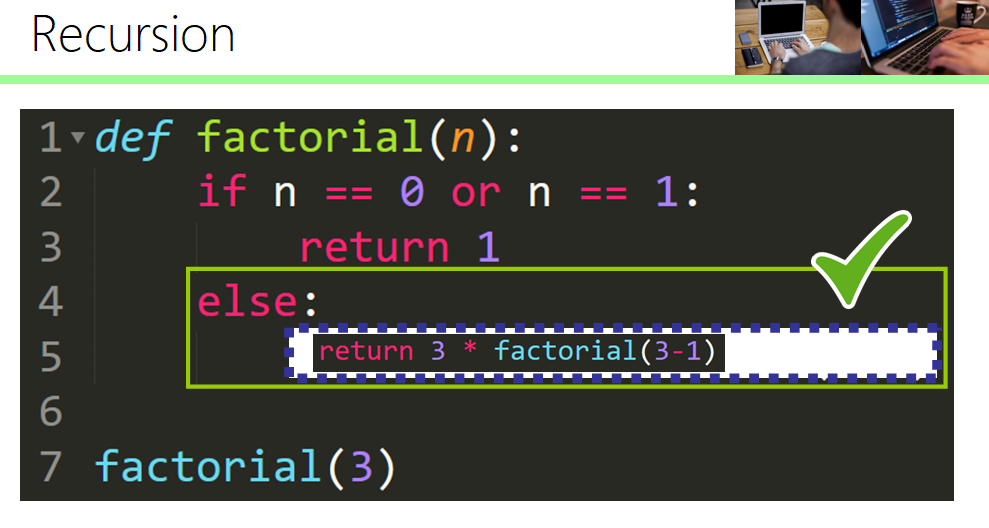
Once this function call is executed, the program “waits” for the sequence of function calls to complete.
When the function is called within this function with
n-1 as the new argument, you need to find the value returned by this new function call before returning a value. Otherwise, how would the computer know what value to return if the expression 3 * factorial(3-1) is not complete? We don’t know the value of factorial(3-1) yet.
As you can see in the diagram below, the program “waits” until a value is returned.
But what happens while the program “waits”?
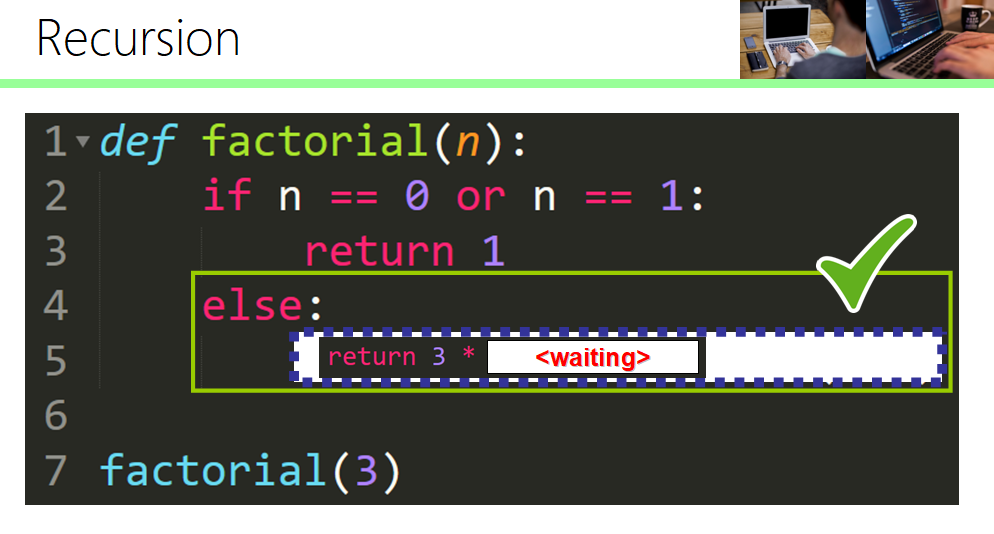
The function call to
factorial(n-1) is equivalent to factorial(2) because the argument for n was 3. This calls the function again. The if condition is checked with n = 2 as the argument. Since 2 is not 0 or 1, the else clause is executed, and factorial(n-1) is called again, factorial(1). (please see factorial(2) in the diagram below).
The program needs to wait again until a value for
factorial(1) is found. The function call factorial(1) is executed, and the value 1 is returned.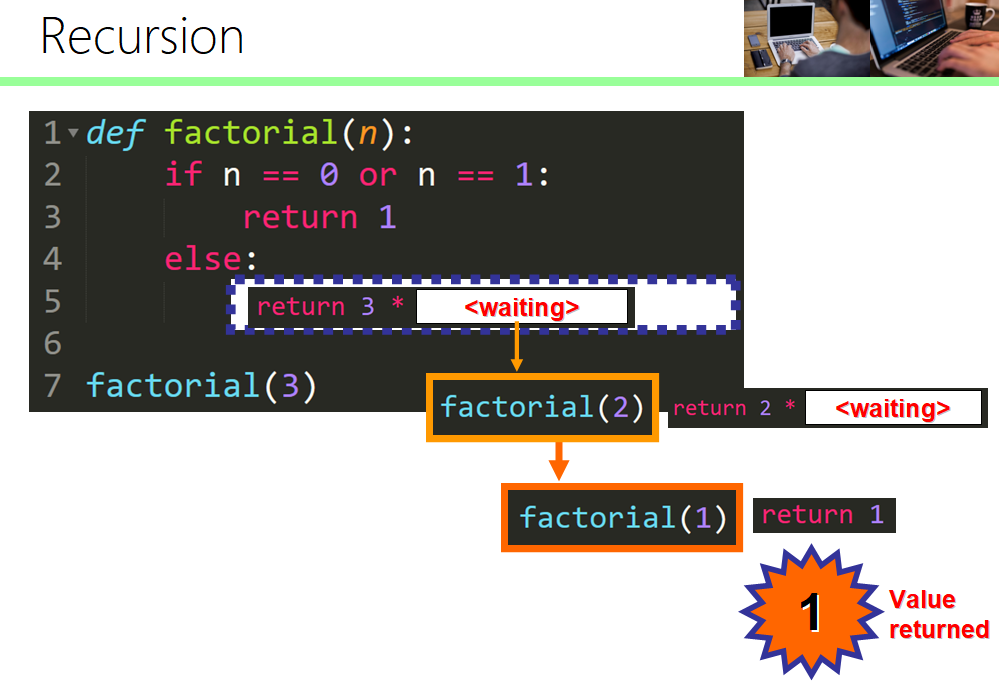
This is the sequence of return statements that are executed during the process. It continues until we reach the base case, when n is either 1 or 0. When the condition evaluates to
True, the integer 1 is returned.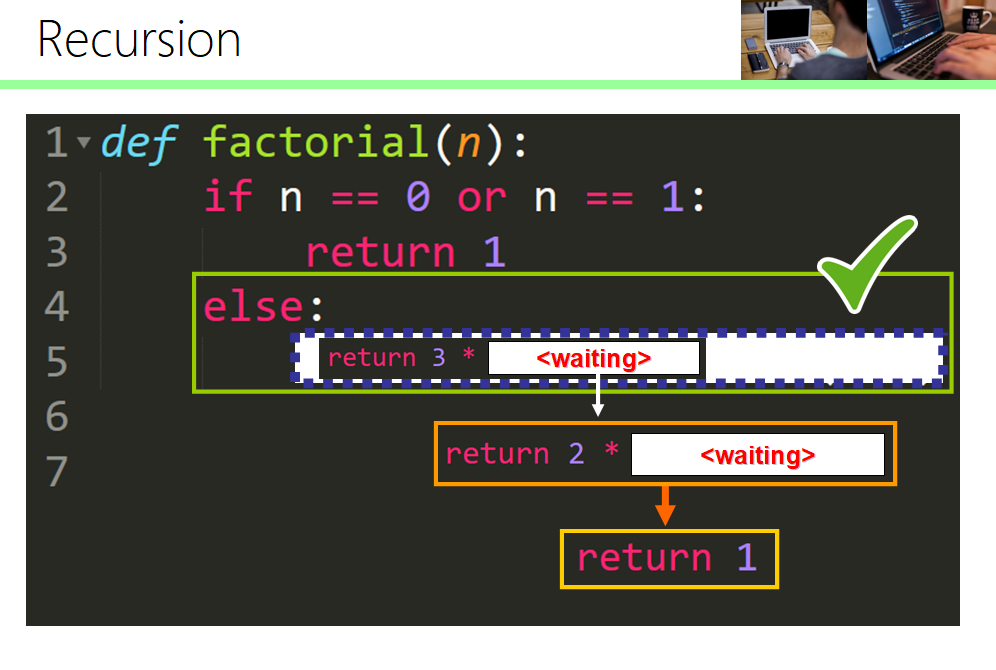
Once a value is returned, those spots that were “waiting” for a result are filled up the chain.
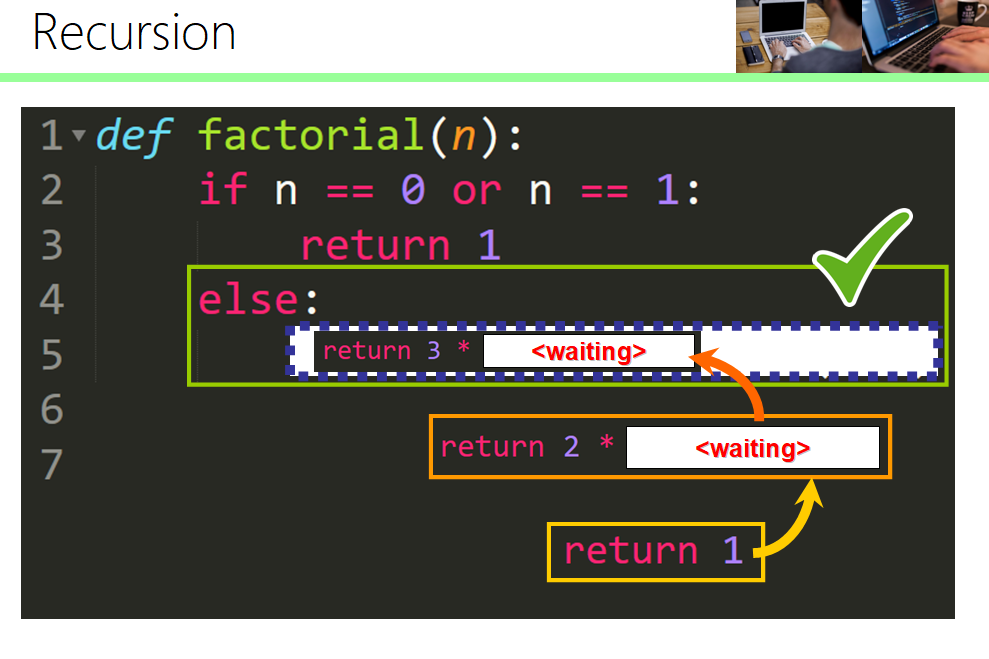
When the final function call returns a value, 1, that value is returned to the function call
factorial(2) and the resulting value, 2, is returned to the first function call factorial(3).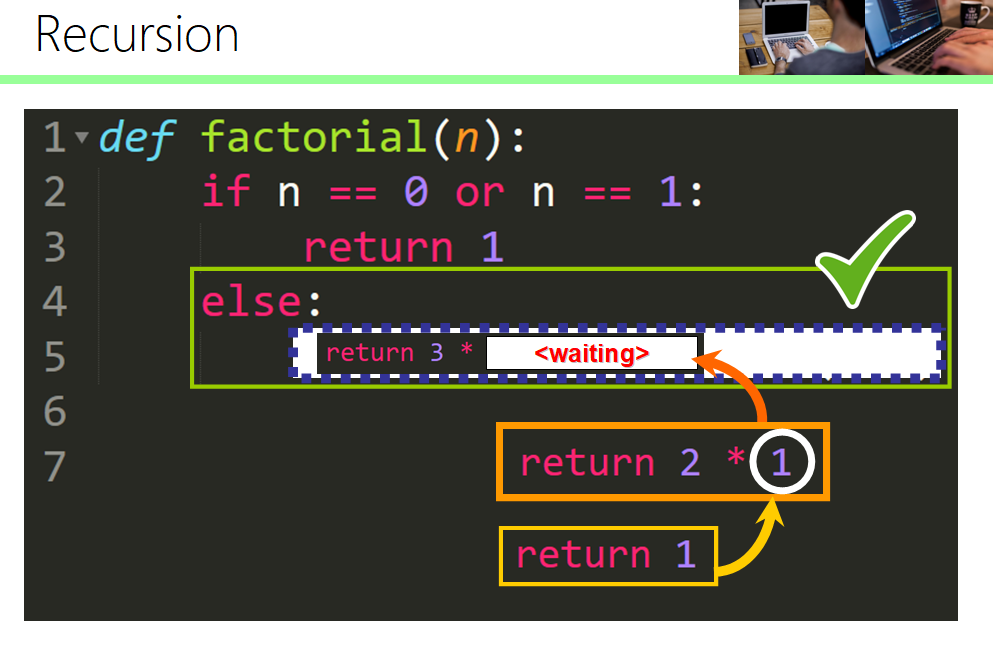

Finally, 6 is returned from the function call
factorial(3)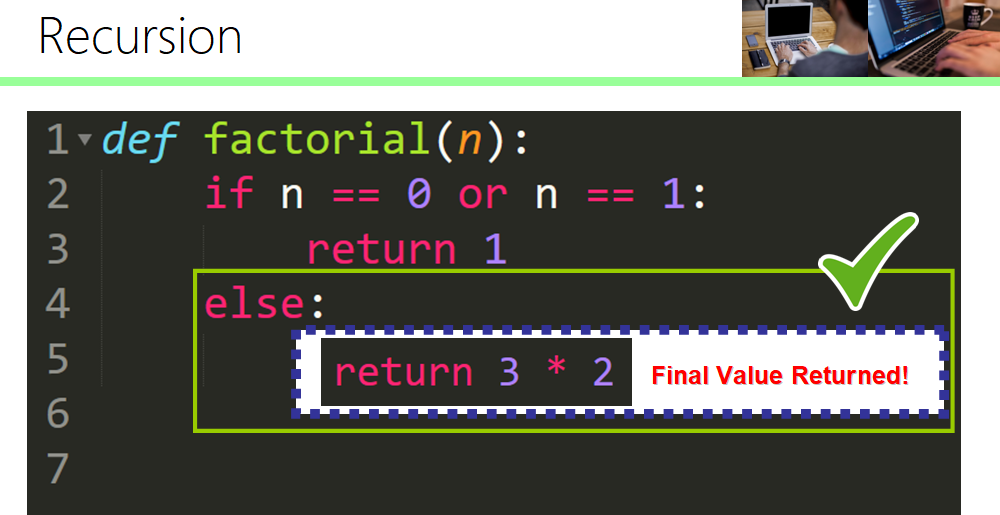
This is the code and the final result, 6. I added print statements to illustrate the process. 👍
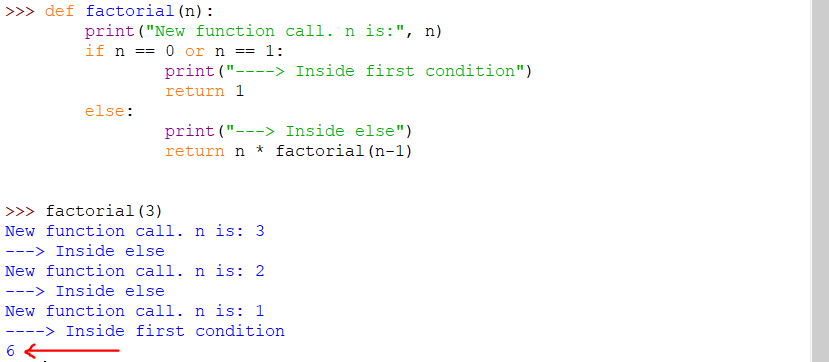
I really hope that this has been helpful. If you have any questions, please do not hesitate to ask. Your classmates and Community TAs will always be there to help you. 🙂
Estefania.
This comment has been removed by the author.
ReplyDeleteNice tutorials but that 6 wil not be printed :-) . Why is the 1 from the base case not returned at the end? You are in the if-statement.
ReplyDeleteHi Han, yes, that 6 will be returned by the function. It is displayed because the code was run in the IDLE interactive shell. The 1 is returned to the previous function call once the condition in the if statement evaluates to True. The value of that previous function call is calculated, and the value is returned to the previous function call, and so on until the first function call is reached.
Delete